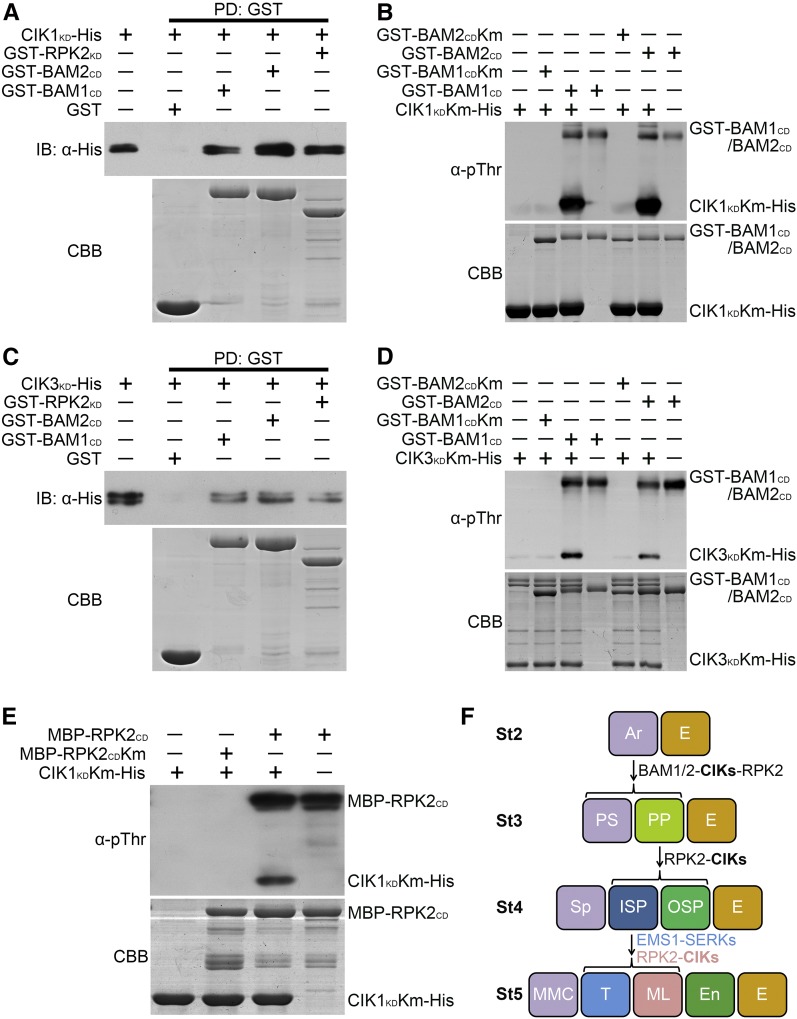Figure 9.
CIKs Can Be Phosphorylated by BAM1/2 and RPK2.
(A) and (C) CIK1KD and CIK3KD interact with BAM1CD, BAM2CD, and RPK2KD in vitro. CIK1KD-His (A) and CIK3KD-His (C) fusion proteins were incubated with glutathione beads bound with GST, GST-BAM1CD, GST-BAM2CD, or GST-RPK2KD. The pulled-down (PD) proteins were immunoblotted with an α-His antibody (IB, α-His).
(B) and (D) In vitro kinase assays showing phosphorylation of CIK1KDKm (B) or CIK3KDKm (D) by BAM1CD and BAM2CD. BAM1CDKm and BAM2CDKm cannot phosphorylate CIK1KDKm and CIK3KDKm.
(E) In vitro kinase assays showing phosphorylation of CIK1KDKm by RPK2CD. RPK2CDKm cannot phosphorylate CIK1KDKm.
An α-pThr antibody was used to detect the phosphorylation levels. The input proteins were stained with Coomassie Brilliant Blue (CBB). These experiments were repeated three times independently with similar results.
(F) CIKs function as coreceptors of BAM1/2 and RPK2 to regulate early anther development. CIKs physically interact with BAM1/2 and RPK2 to ensure specification and maintenance of the parietal cell fate. In the quadruple cik mutant, the primary parietal cell cannot be properly specified because of the altered division of the archesporial cell, which produces MMC-like cells enclosed only by the epidermis. The inner secondary parietal cell and the outer secondary parietal cell cannot be properly specified in some areas of cik anther wall either, resulting in MMC-like cells surrounded by one or two parietal cell layers and the epidermis. RPK2-CIKs and EMS1-SERKs complexes coordinate to determine the inner secondary parietal cell fate. The inner secondary parietal cell only forms the tapetal cell without the function of CIKs or RPK2, whereas it only forms the middle layer cell in ems1 or serk1/2 mutants. Anther stages (St) 2 to 5 are represented. Ar, archesporial cell; E, epidermis; En, endothecium; ML, middle layer; PP, primary parietal cell; PS, primary sporogenous cell; ISP, inner secondary parietal cell; OSP, outer secondary parietal cell; Sp, sporogenous cell; T, tapetum.

